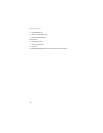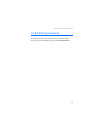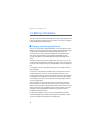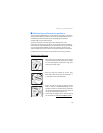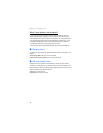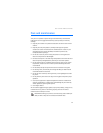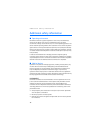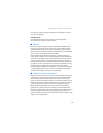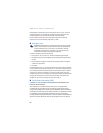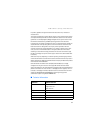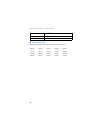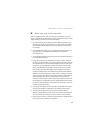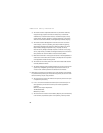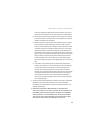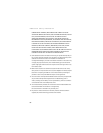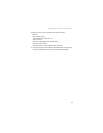
Additional safety information
80
FCC regulations prohibit using your wireless device while in the air. The use of
wireless telephones in an aircraft may be dangerous to the operation of the
aircraft, disrupt the wireless telephone network, and may be illegal.
Failure to observe these instructions may lead to suspension or denial of
telephone services to the offender, legal action, or both.
■ Emergency calls
Important: Wireless phones, including this phone, operate using radio
signals, wireless networks, landline networks, and user-programmed
functions. Because of this, connections in all conditions cannot be
guaranteed. You should never rely solely on any wireless phone for
essential communications like medical emergencies.
To make an emergency call, do the following:
1. If the phone is not on, switch it on. Check for adequate signal strength.
2. Press End as many times as needed to clear the display and ready the phone
for calls.
3. Enter the official emergency number for your present location. Emergency
numbers vary by location.
4. Press Call.
If certain features are in use, you may first need to turn those features off before
you can make an emergency call. If the phone is in an offline or flight mode, you
must change the profile to activate the phone function before you can make an
emergency call. Consult this guide or your service provider. When making an
emergency call, give all the necessary information as accurately as possible. Your
wireless phone may be the only means of communication at the scene of an
accident. Do not end the call until given permission to do so.
■ Certification Information (SAR)
THE NOKIA 2115i DEVICE MEETS THE GOVERNMENT'S REQUIREMENTS FOR
EXPOSURE TO RADIO WAVES.
Your mobile device is a radio transmitter and receiver. It is designed and
manufactured not to exceed the limits for exposure to radio frequency (RF)
energy recommended by international guidelines (ICNIRP). These limits establish
permitted levels of RF energy for the general population. The guidelines are based
on standards that were developed by independent scientific organizations
through periodic and thorough evaluation of scientific studies. The standards and
guidelines include a substantial safety margin designed to assure the safety of



